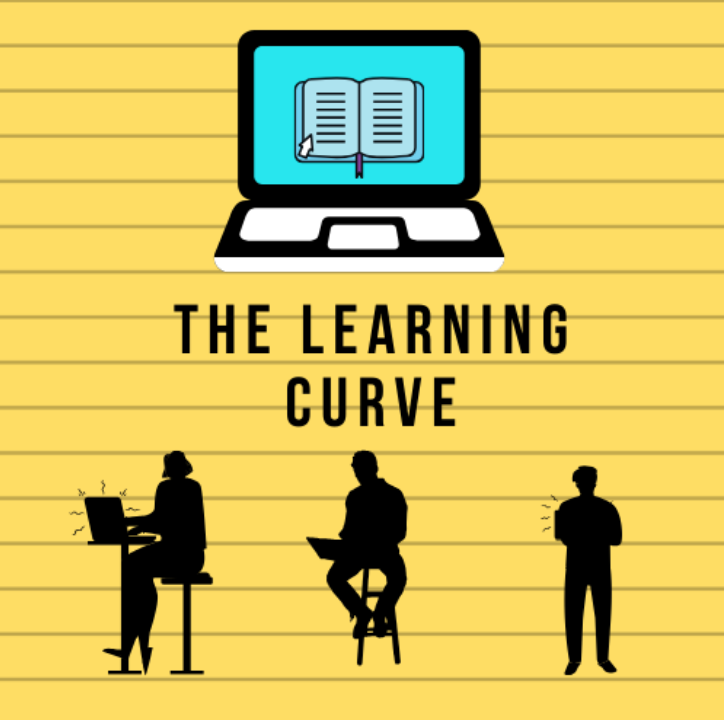Learning curves
How schools have reacted to the impact of coronavirus through distance learning may have future impact on education.
Schools across the globe resorted to online learning in wake of the coronavirus pandemic, relying heavily on learning devices such as computers and tablets to connect with students.
May 20, 2020
For Cathedral Catholic High School student Taylor Lepisi ‘22, the inability to attend on-campus school has proved a serious obstacle for his learning capabilities.
“For me, as a student, it’s easier to keep track of upcoming assignments when the teachers are constantly reminding you,” Lepsisi said. “[Online schooling] was a definite challenge because now I have to remind myself constantly, and sometimes I get behind or sidetracked with my other daily activities.”
Many people assume that adolescents would enjoy an experience where they could lounge around at home and barely attend classes. They would no longer have to wake up at 6 a.m. or earlier to get prepared for the day, to drive to school, and to sit in on teachers’ lectures for hours at a time–every teenagers’ dream. However, the transition from learning on campus to online learning appears more frustrating for a multitude of students across the globe than originally perceived.
While opinions on schooling always vary from student to student, a majority do enjoy certain learning tools that multitudes of schools have implemented: technology. Whether adolescents utilize their iPads and computers for learning purposes or for their own enjoyment, the addition of devices in the classroom is noticeable across the United States.
Students and teachers have leaned on technology and online resources during the integration into distance learning. With the coronavirus causing schools across the country to close, and with educators adopting online learning as a method to reach students, devices have played a crucial role in continuing the school year. However, as days extend into weeks, many people are left to question the consistent effectiveness of online learning and what these methods might hold for the future of education.
Student perspectives on distance learning included a number of varying responses, including those at Cathedral Catholic High School. Many students feel their work ethic has increased substantially due to the structure of online learning.
“I like that online learning is a lot more efficient than learning in the classroom, and I don’t waste as much time in my day,” Carolina Ternero ‘22 said. “In fact, I only spend about three to four hours a day on school work, so I get done a lot faster and have more time to do other things I enjoy.”
In contrast, many CCHS students have stated that having to learn without the constant guiding hand of a teacher has proved a difficulty.
“It’s challenging learning the new material by yourself, and when I do have questions, it’s a challenge getting my sleep schedule right in order to make it to school meetings,” Lepisi said.
Teachers have also felt the strain of the transition, as they must adapt to teaching their students through a screen, changing their lesson plans as schools show no indication of returning to their usual routine by June.
“One of my favorite parts about teaching English is getting my students into a discussion on a reading and watching them build off each other’s ideas and gain a better understanding of a text,” CCHS English teacher Miss Sara DeSantis said. “Unfortunately, that’s just not possible with an asynchronous teaching environment. Although, discussion boards on Schoology and FlipGrid fill the void somewhat.”
Miss DeSantis, who is currently enrolled in a Master’s program, has experienced online learning from both the perspectives of a teacher and a student.
“I often find myself missing the in-person discussions I had when I was in college and in my other grad program,” Miss DeSantis said. “However, I am also older and have more experience with setting a schedule that works for me and ensures I go to sleep at a normal time, unlike some of my students who are sending me emails at 3 a.m.”
While students and teachers face a number of obstacles when attempting to tackle online learning, many have stated the presence of previously integrated learning tools making the shift a more comfortable one.
“CCHS is very well-equipped for distance learning,” math teacher Miss Christine LaPorte said. “Students already have iPads, we already use Schoology, and teachers are already trained to integrate technology into their courses. Now it’s just a matter of streamlining our virtual instruction to incorporate best practices and minimize student confusion and frustration.”
Math teacher Mrs. Elizabeth Roteliuk echoed the idea that already utilized online tools have benefitted CCHS in their transition to distance learning.
“We are so blessed at CCHS that we have so many dedicated teachers, administrators, counselors and staff–and super awesome students and families –all working together to make the most of our online learning situation,” Mrs. Roteliuk said. “There are many challenges, but I’m thankful we were already using a lot of technology at school and had time to build relationships and routines in our classrooms before having to figure out the online learning thing.”
According to a poll of more than 100 CCHS students conducted by El Cid, 82% prefer education in a physical classroom in comparison to online learning. In addition, nearly two in ten students stated that online schooling was a better choice for them.
Although many opinions concerning online schooling are divided, the growing appeal of online teaching to students could cause a shift in the education system and the possibility of online schooling becoming more commonplace.
Surveys done by Learning House Inc. in 2018 found that 86% of students taking online courses felt the value of their degree equaled or exceeded their enrollment costs. For those who experienced classes both in person and online, 85% thought that online learning was the same or better than attending on campus classes.
The increasing amount of positive feedback regarding the quality of online learning is only bolstered by the fact that a majority of students are already comfortable with technology playing a large role in the classroom. According to a 2019 study done by the NewSchools Venture Fund, 53% of teachers use learning devices in class every day. Additionally, 7 in 10 older students agree that utilizing technology to learn has helped them excel on their own.
With a staggering percentage of students and teachers already comfortable with technology in the classroom, it is not impossible to see an increased number of students leaning towards online education in the future, and especially in the world’s current situation concerning threats imposed by COVID-19.
“I do see online schooling becoming more common as students become more confident with the platform and educators expand offerings and interactions and gain expertise with it,” Dean of Mission and Ministry Mrs. Stacy Wells said. “There is a great opportunity for our teachers to expand what we offer beyond the requirements of a classroom and to include voices from around the world into our classes and learning in new ways.”
Depending on the effectiveness of distance learning during the current pandemic, educators could witness a massive shift from in person, on-campus teaching to teaching on an online platform even after coronavirus restrictions have lifted. Still, the concept of on-campus learning remains appealing to a multitude of students and teachers, and many wait patiently for a return to a somewhat normal routine.
“Honestly at this point, six grueling weeks into self-quarantine and isolation, I would drive any distance to be back on campus,” Ms. LaPorte said.























































